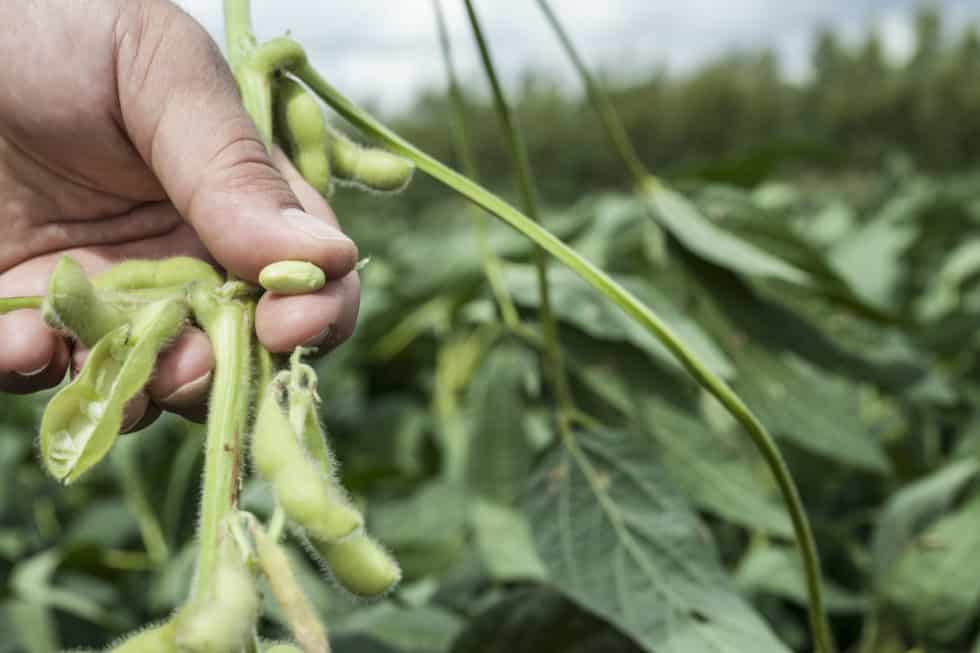Disclaimer, these are the views of the author and do not necessarily reflect those of the publication.
Claire Insley has been the Media Spokesperson and board member of the Vegan Society Aotearoa since 2015. A passionate advocate for the environment, Claire has been involved in many groups over the decades, from Greenpeace to GE Free NZ, they have been involved in many non-violent direct actions in the past.
Here, Claire describes their thoughts against the engineering of foods such as soybeans and puts forward that the soybean is fine as it is, thank you.
Inserting animal genes in soy is unacceptable
By Claire Insley
As a long-term campaigner against Genetic Engineering (GE) in our foods, I was saddened to see the news that pig and cow genes have now been inserted into soybeans. When the term GE or GMO first became widely known in the 1990s, there were concerns about the addition of selected genes from different species being inserted into other genomes. For many cultures and religions, the very idea goes completely against their beliefs and ethics. This is not selective breeding, it is an entirely different prospect and there is no possible way that selective breeding could bring animal genes into plants.
For myself, I object on principle to the use of GE in these ways. I might be persuaded to change my mind if any GE plant was being bred to be drought resistant, or disease resistant, with higher protein levels, or somesuch, however, most GE plants are resistant to pesticide use and herbicides.

They have been engineered for profit, not because of a genuine need. Climate-resistant plants could be useful, for example. The main problem with these plants is that they have never been tested for long-term effects and in the US the regulations are so poor, that it was decided early on that GE plants were “substantially the same” as their non-GE counterparts and thus did not require any testing!
Now we have reached the point that many GE activists have been concerned about. Animal genes placed into plants for people to eat. The reason behind this idea is to potentially improve the taste, texture, flavour, colour of the resultant soy. Surely, by its very definition, this makes the new soy “substantially different” from any other soy, even other GE soy? The new soy plants (are they even still plants?) have been approved for growth in Argentina and who knows when any resultant product will make it to the market? What are the long-term effects of eating such soybeans? We do not know.
Is it even vegan?
The other large problem with the release of GE plants into the wild in this manner, is that cross-pollination will occur. These genes will be amongst all the soy in the surrounding areas by the end of the year. Next year, one might suppose the genes will have spread further, unknown and uncounted into the environment. What is the effect there? We do not know. How far will contamination spread? We do not know.

The soybean has been eaten for thousands of years by people and many complain about its blandness, yet therein lies its top quality. You can make tofu taste like almost anything. It can be used to make tasty meat alternatives, it can be used in delicious desserts to give a smooth and creamy taste and texture. If we have this new pig or cow soy, how can that be used for a dessert?
Won’t the extra flavour and texture produce unwanted effects in this case? Do we want bacon-flavoured soy milk? And is this new soy even vegan? Many would say no! The addition of animal genes means that this vegan’s ideal choice and very versatile plant is suddenly stuffed into a niche market.
The truth is that most meat eaters are not prepared to give up eating meat voluntarily, no matter how many pig and cow genes you put into a soybean, most meat eaters will tell you they’d rather eat a steak. Whilst they have the choice to do so, they will. No amount of convincing will make your average meat eater swap out the meat for tofu every time. So really, what is the point of this endeavour?





